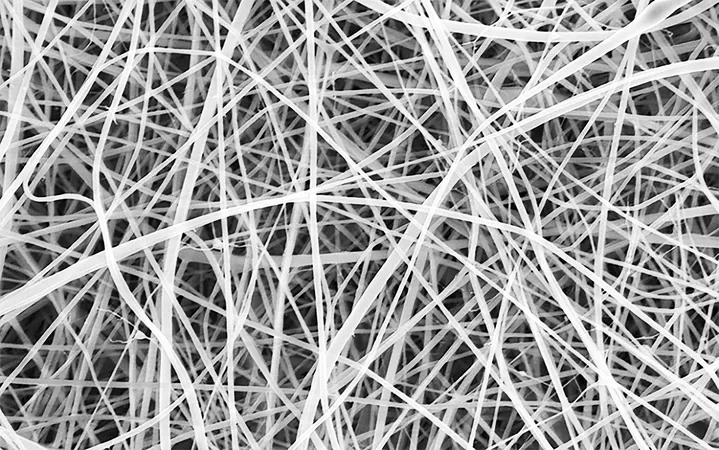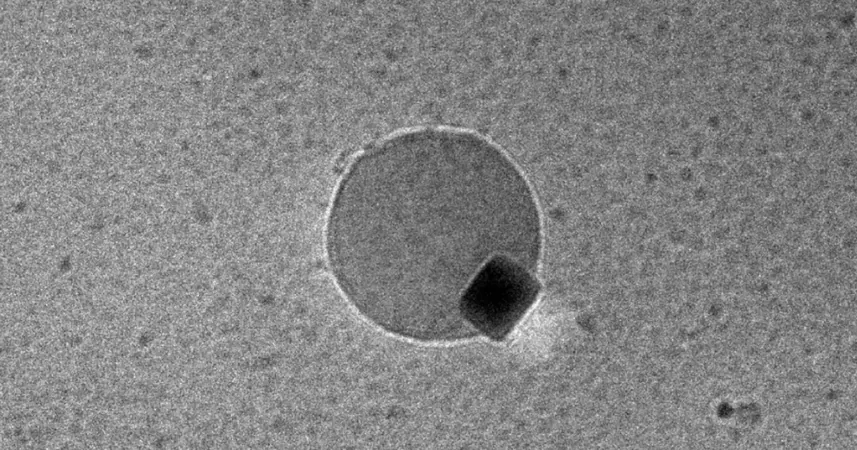
Meet 'Nanopasta': The World’s Thinnest Spaghetti That Could Revolutionize Medicine!
2024-11-24
Author: Noah
Imagine spaghetti so thin it’s 200 times smaller than a human hair—no longer a delightful Italian dish, but a groundbreaking innovation ready to change the fields of medicine and materials science! Researchers at University College London (UCL) have successfully produced the world’s thinnest strands of material, affectionately nicknamed "nanopasta."
Leading the charge in this fascinating study is Beatrice Britton, who developed this idea as part of her master’s degree in chemistry. Collaborating with Dr. Adam Clancy, Britton explained the process of creating these nanofibers: “Just like making spaghetti by pushing a mixture of water and flour through tiny holes, we pulled our flour mixture using an electrical charge to create strands that are incredibly small yet incredibly powerful.”
But why is this nanopasta important? The answer lies in its unique properties. Made from starch, a readily available and renewable resource, these nanofibers have remarkable potential for applications in wound healing, tissue regeneration, and drug delivery. The porous structure of these nanofibers allows moisture to pass through while acting as a barrier against harmful bacteria—a promising feature for advanced wound dressings.
Professor Gareth Williams from the UCL School of Pharmacy highlighted the material's versatility, stating, “Nanofibers made from starch can serve as scaffolding for tissue regeneration, mimicking the extra-cellular matrix that supports cells.”
One compelling aspect of this innovative approach is its sustainability. Traditional methods for producing nanofibers often involve intensive energy and water consumption, raising environmental concerns. However, the UCL team’s method of sourcing directly from starch-rich flour offers a greener alternative, aligning scientific advancement with ecological responsibility.
Despite these advancements, challenges remain. Impurities in starch, such as proteins, can make the formation of nanofibers difficult. However, the researchers found that using formic acid instead of water to dissolve starch resulted in a more effective process. By carefully controlling the temperature during this preparation, they were able to achieve the desired consistency for fiber formation.
While enthusiasm abounds, the path ahead includes rigorous testing to unveil the full capabilities of this “healing spaghetti.” Dr. Clancy mentioned, “We need to explore how quickly it disintegrates, how it interacts with cells, and if we can produce it at scale.”
The possibilities of these nanofibers extend beyond the medical field, hinting at applications in environmental engineering and the development of sustainable materials. However, culinary aspirations for this “spaghetti” remain unrealistic. Professor Williams humorously lamented, “I don’t think it could ever be used as pasta since it would overcook in less than a second!”
As researchers continue to refine their techniques and investigate the properties of this innovative material, the potential for nanopasta to impact various sectors, from healthcare to environmental sustainability, seems limitless. The world awaits as this remarkable example of modern materials science unfolds!
The study detailing these promising discoveries is published in the journal *Nanoscale Advances*.









 Brasil (PT)
Brasil (PT)
 Canada (EN)
Canada (EN)
 Chile (ES)
Chile (ES)
 España (ES)
España (ES)
 France (FR)
France (FR)
 Hong Kong (EN)
Hong Kong (EN)
 Italia (IT)
Italia (IT)
 日本 (JA)
日本 (JA)
 Magyarország (HU)
Magyarország (HU)
 Norge (NO)
Norge (NO)
 Polska (PL)
Polska (PL)
 Schweiz (DE)
Schweiz (DE)
 Singapore (EN)
Singapore (EN)
 Sverige (SV)
Sverige (SV)
 Suomi (FI)
Suomi (FI)
 Türkiye (TR)
Türkiye (TR)